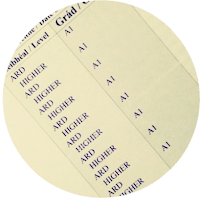The light microscope parts and functions:
- Eyepiece lens: magnification
- Nosepiece: holds the objective lenses
- Objective lens: magnification
- Clip: holds the slide in place
- Stage: the slide is placed on the stage
- Condenser: focuses light onto the slide
- Diaphragm: used to adjust the amount of light shining on the slide
- Light: supplies light to the slide
- Stage height adjuster: allows the stage to be moved up and down
- Coarse/fine focus knob: focuses the image on the slide
How to use a light microscope:
- Lower the stage to the bottom
- Place the slide onto the stage and clip into place
- Use the lowest power objective lens first
- Use the coarse focus knob to approximately focus the object on the slide
- Use the fine focus knob to focus the object on the slide
- Adjust the amount of light hitting the object using the diaphragm
- Repeat with a higher power objective lens
The transmission electron microscope:
- Instead of using light to view objects, electrons are fired at the object and bounce off of it, allowing us to see
- Because the wavelength of electrons are much lower than that of light, a more detailed and higher resolution image is obtained
Calculating magnification:
- Magnification is calculated by multiplying the power of the eyepiece lens by the power of the objective lens
- For example, if the power of the eyepiece lens is 10x and the power of the objective lens is 3x, the overall magnification is 30 (3 x 10 = 30)
The cell:
- The cell is the smallest functional unit of life
- Ultrastructure: the structure of a cell that can be seen under an electron microscope.
- Animal cells:
-
- Cell membrane: composed of phospholipids and proteins. Allow for some substances to enter while keeping some substances out. It also supports the cell.
-
- Cytoplasm: a viscous, jelly-like liquid that contains and stabilises the organelles. It is where the majority of metabolism occurs.
- Mitochondria: provides energy during respiration. Has cristae (infoldings) for increased surface area and increased energy production.
- Ribosomes: this is where proteins are made
- Nucleus: contains DNA and RNA. Controls the cell processes.
- Nucleolus: located inside the nucleus, contains chromatin. This is where ribosomes are made
- Nuclear pores: areas in the nuclear membrane made of various proteins through which molecules can pass in and out of the nucleus.
- DNA: stores our genetic material
- Plant cells:
- Have all of the above features of animal cells with the addition of the following:
- Cell wall: gives the cell its shape, strengthens the cell and prevents it from bursting. Plant cell walls are made of cellulose
- Vacuole: vesicles surrounded by a membrane that have various functions, such as storage and waste removal.
- Chloroplast: this is where photosynthesis takes place. Contains the pigment chlorophyll to trap light.
- Examine animal cells:
- Using a cotton swab, run it along the inside of your cheek.
- Spread onto the slide.
- Apply methylene blue as a stain with a dropper. A stain is needed to be able to clearly see the cells.
- Add a cover slip at a 45 degree angle to avoid air bubbles. The cover slip is needed to protect the lens and prevent the cells from drying out.
- View under the microscope using the procedure outlined above.
- Examine plant cells:
- Pull a thin strip of epidermis from an onion or take a thin shaving of Elodea leaf/potato/moss
- Place it on the slide
- Apply iodine as a stain with a dropper
- Add a cover slip at a 45 degree angle to avoid air bubbles. The cover slip is needed to protect the lens and prevent the cells from drying out.
- View under the microscope using the procedure outlined above.
- Protoplasm: The collective term for the cytoplasm and nucleoplasm.
- Prokaryotes: Organisms whose cells do not have a membrane bound nucleus or membrane bound organelles, e.g. bacteria.
- Eukaryotes: Organisms whose cells have a membrane bound nucleus and membrane bound organelles, such as mitochondria and chloroplasts, e.g. plants and animals
Diagrams and sample answers for this chapter are available in our full Biology guide
 |
|
Leaving Cert Sample Answers and Notes
|
